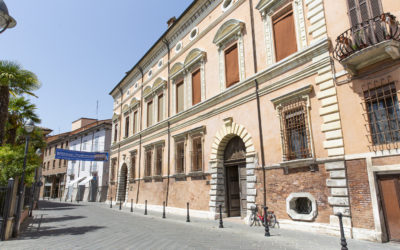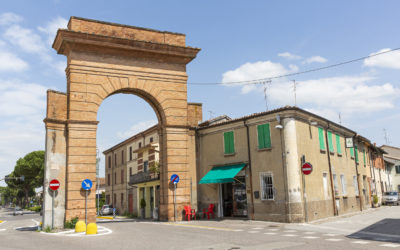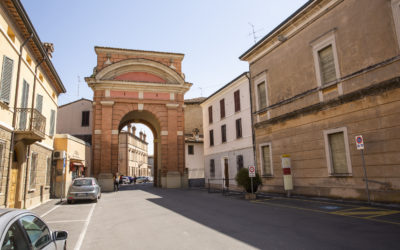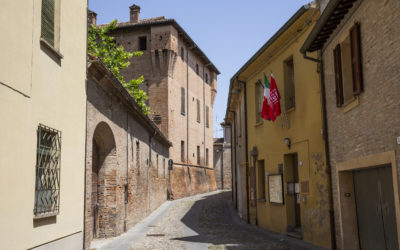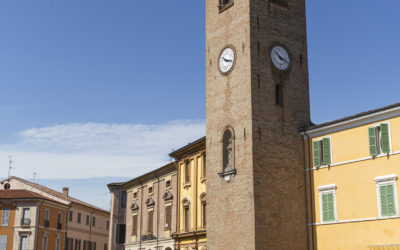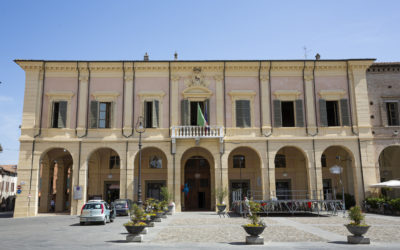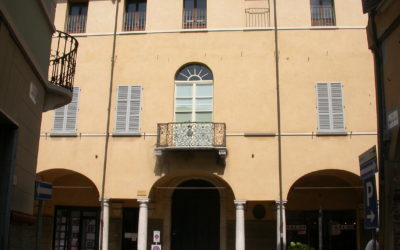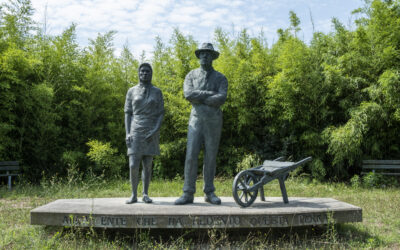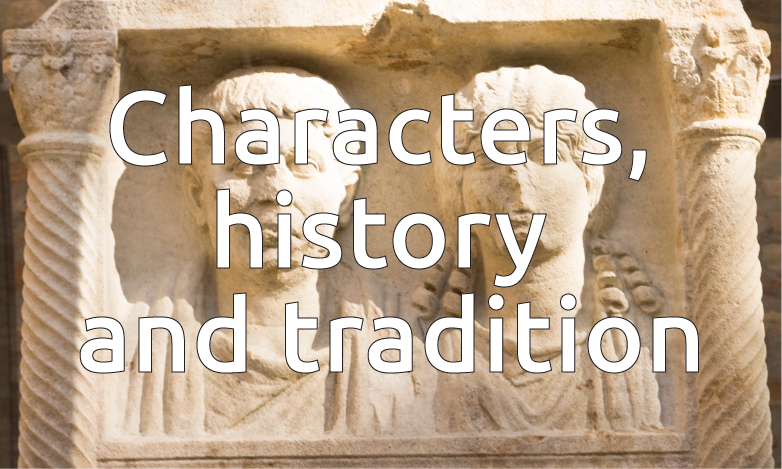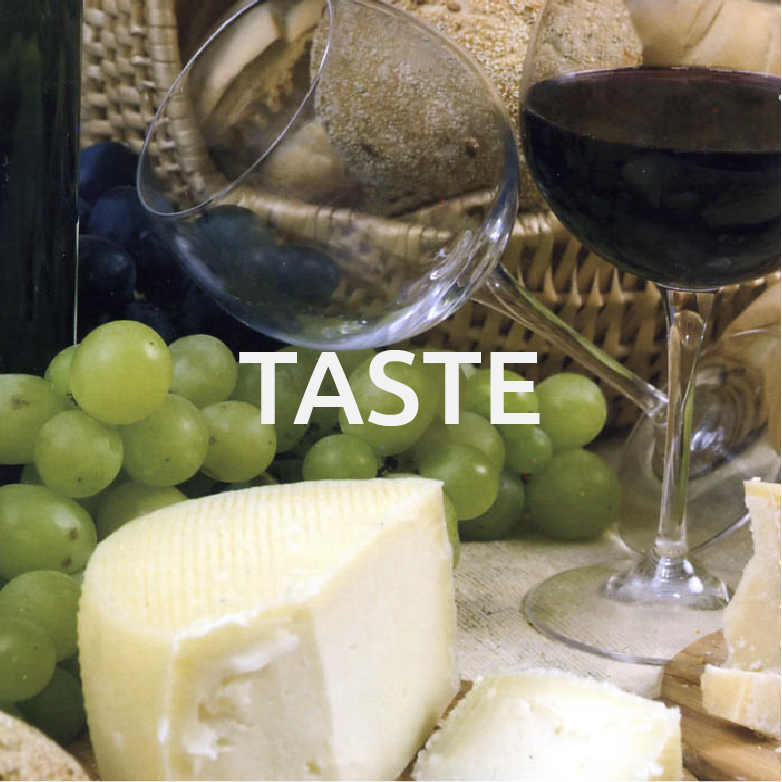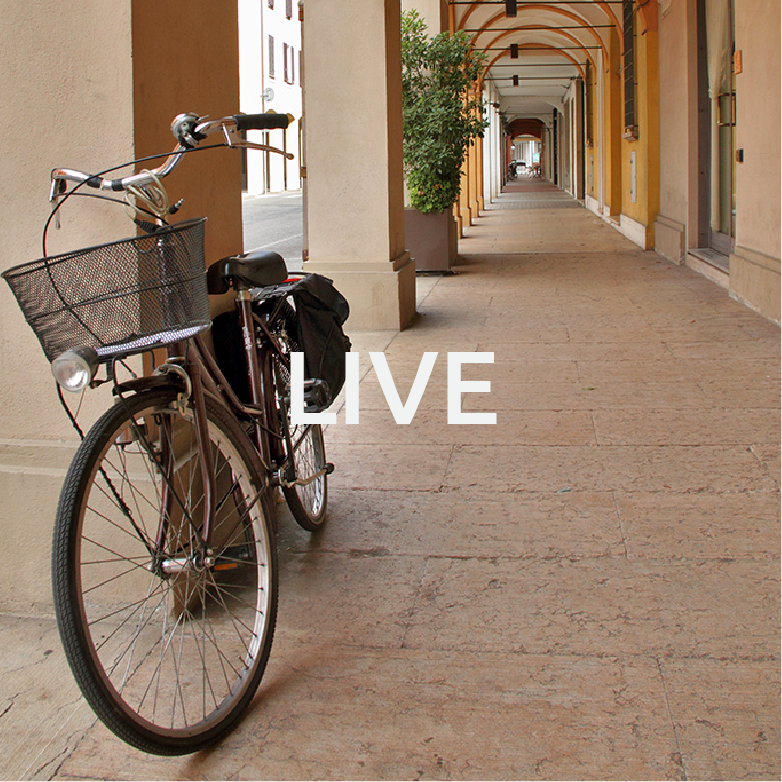Monuments
PALAZZO PAPINI-CAPRA
This private palace was built in the XVII century and it was originally named after the family Papini, while later it turned into Capra. In 1662 the palace hosted Cristina Queen of Sweden, while on her way to Rome.
PORTA PIEVE
Porta Pieve is, together with Porta Superiore, one of the still visible city gates (the other two gates were Porta Bulgarella or San Domenico, Ravenna direction and Porta Inferiore or of Sant’Apollinare or Cappuccini, Villa Prati – Alfonsine direction). Built at the beginning of XIV century, it was reconstructed in 1836, as can be seen from the inscription on the stone tablet of the attic.
PORTA SUPERIORE
Porta Superiore is, together with Pieve city gate, one of the still visible city gates (the other two were Porta Bulgarella or San Domenico, towards Ravenna direction and Porta Inferiore or of Sant’ Apollinare or Cappuccini, towards Villa Prati / Alfonsine direction). Built at the beginning of XIV century, it was reconstructed in the XVIII century.
CASTELLACCIO
The so called Castellaccio is an old fortified building, part of the ancient Bagnacavallo stronghold. It dates back to the XII century, even if the current structure has clear XV century features. Now is a private propriety.
PALAZZO DELLE OPERE PIE
This palace was built in 1728 to host the bishop while he was staying in Bagnacavallo. But the cardinal “Cardinal Legato” didn’t agree that the bishop could spent long periods out of its hometown Faenza, so the palace became property of Sacro Monte and “Congregazione delle Opere Pie”.
TORRE CIVICA
The civic tower, like the near “Palazzo Vecchio” in Bagnacavallo, was built in the XII century during the Bolognese dominion, but along the centuries it underwent several alterations.
PALAZZO COMUNALE – TOWN HALL
The townhall of Bagnacavallo, named Palazzo Comunale, is situated in the central piazza della Libertà. The townhall was designed by the architect Cosimo Morelli and built starting from 1791 on the ruins of the former old Palazzo Brandolini.
PALAZZO LONGANESI
Palazzo Longanesi, in the historical town centre, was built in the XVIII century. Now is the home of descendants of Admiral Luigi Longanesi Cattani admiral of Marina Militare Italiana.
MONUMENT TO RICE WEEDERS AND TO RIVER BANKS BUILDERS
Luciano Caldari’s monument in Conselice celebrates the earliest labourers’ revolts and the rice weeders demands which led to the 1890 massacre during the so called “red week”.
VILLA GIARDINI formerly VILLA PASTORELLA
The villa has a regular compositional scheme, based on the three-bay model and the facade is framed by corner pilasters, characteristic of the neoclassical period. It was present in the maps from the last quarter of the eighteenth century, that is, in the same period in which the Santerno river was diverted to Passogatto.

